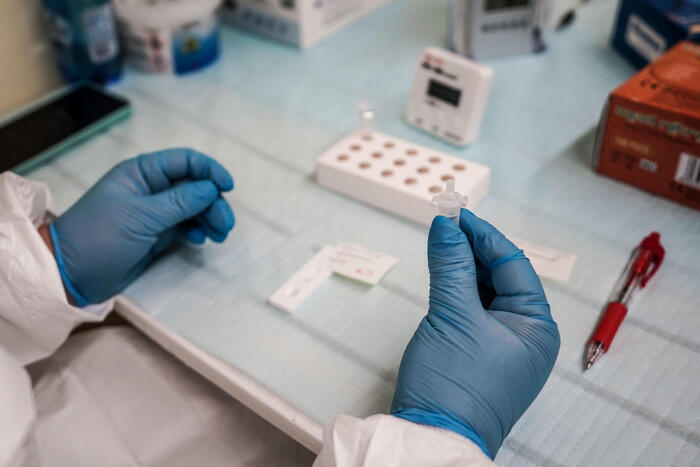New cases grow to 21,309, up compared to 14,866 last week (+44%), according to what emerges from the weekly bulletin of the Ministry of Health and the ISS which states that “the infection remains low although it has been increasing for three weeks”. The incidence also rises to 31 cases per 100 thousand inhabitants compared to 24 last week. Slight growth in hospitalizations in the medical area at 3% compared to 2.7% last week with a total of 1,872 beds occupied. Occupancy in intensive care grew slightly (0.6% compared to 0.4% in the previous survey) where 49 people were hospitalised. The age group that records the highest weekly incidence rate per 100,000 inhabitants is the elderly over 90 years of age (69 cases per 100,000 inhabitants), “increasing compared to the previous week” and “the incidence is increasing also in all other age groups. The median age at diagnosis is 56 years, substantially stable compared to previous weeks”. The rate of reinfections is increasing and is around 39%.
The ministry circular – No Covid swabs for asymptomatic people arriving at the emergency room, while tests are carried out for symptomatic people, also for the search for other viruses (flu A and B, RSV, Adenovirus, Bocavirus, human Coronaviruses other than SARS-CoV-2, Metapneumovirus, Parainfluenza viruses, Rhinovirus, Enterovirus). This is indicated in the new circular from the Ministry of Health, signed by the director of prevention Francesco Vaia “after examining the current clinical-epidemiological trend”. The swab is expected when transferring from one facility to another and in RSAs. If you have symptoms, you are advised to avoid entering healthcare facilities.
wow “The current clinical-epidemiological trend does not cause alarm, but requires attention and precautionary measures.” This was stated by the general director of health prevention of the Ministry of Health, Francesco Vaia, in a statement accompanying the weekly bulletin on the epidemiological situation from Covid 19 in the period 31 August – 6 September. “The Ministry, in the primary interest of protecting the most vulnerable citizens, is moving in a dual direction: on the one hand protection and prevention measures for the protection and safety of both patients and operators and on the other the preparation of a campaign of annual vaccination that aims to protect those who have been most affected by COVID in the past: the elderly, the frail, the immunocompromised”, underlines Vaia.
L’Oms. “We continue to see worrying Covid-19 trends ahead of the winter season in the Northern Hemisphere. Deaths are rising in parts of the Middle East and Asia. In Europe, intensive care admissions are rising and hospitalizations are rising in many regions. Furthermore, the data is limited.” Thus the director of the World Health Organization (WHO) Tedros Adhanom Ghebreyesus, who during a press conference held in Geneva specified: “Only 43 countries, less than a quarter of WHO members, report deaths and only 20 report information on hospitalizations”.
Since the beginning of July, indicators show that Covid infections have quadrupled, hospitalized patients have doubled and since August 15th the number of swabs notified have also increased and above all the percentage of positive swabs has always grown to almost 10%. This is what emerges from a report signed by the epidemiologist Cesare Cislaghi on the progress of the virus in Italy in the last 2 months. “This is the situation in Italy today which also finds a similar response in various foreign countries – points out Cislaghi -. Many blame all this on the new, more widespread variants; it may be, but it is too easy to blame the virus which mutates when instead it was decided to eliminate any precaution to isolate the infections.” According to the epidemiologist, “there is no need to cause serious alarm, but it would seem right now to warn the population that it would be appropriate for them to take some precautions again to protect themselves from contagion.
breaking latest news © Copyright ANSA
